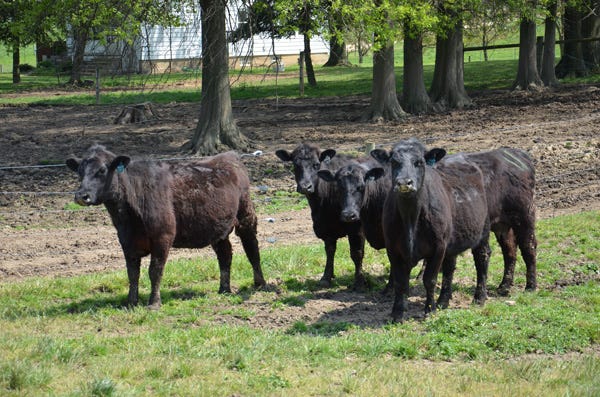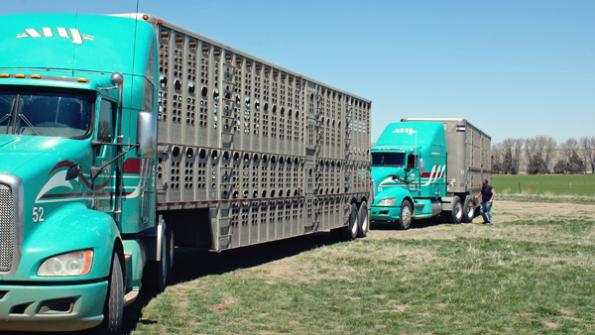Consumers have always been the crux of beef demand. But how demand plays out is in flux. That and more awaits you in this week’s Trending Headlines.

Livestock markets changing in unexpected ways
Consumers are having a much more important effect on livestock markets and they're guiding the markets in some surprising directions.
That’s the message Jim Robb, director of the Livestock Marketing Information Center, has for cattle producers. Livestock prices, especially for beef cattle, are moderating from the price peak of several years ago but the market is changing dramatically, reports the Sterling (Colo.) Journal-Advocate.
"Remember when you'd go into a (grocery) store and you'd see a pet food aisle? Now it's three aisles," he said. "And in the middle of it is a refrigerated section for fresh pet foods. Beef products in pet food have to come from skeletal part of the animal, not the organs. Millenials can't afford to repay their student loans, but they're feeding their dogs really well."
How many heifers should I keep?

While the answer is based on all the same factors, such as stocking rates, marketing plans, etc., the final number will ultimately be for each individual rancher to decide as it will directly affect his bottom line, according to the Oklahoma Farm Report.
"As a starting place in the effort to answer this question, it is important to look at the 'average' cow herd to understand how many cows are in each age category,” says Glenn Selk, emeritus Extension animal scientist at Oklahoma State University. If 100 cows are expected to produce a calf each year, 17 of them will be having their first baby. “Therefore, this gives us a starting point in choosing how many heifers we need to save each year."
BQA launches new transportation training and certification program

The checkoff-funded Beef Quality Assurance (BQA) program has launched a new training and certification program for cattle transportation. The program, known as Beef Quality Assurance Transportation (BQAT), provides cattle producers and haulers with comprehensive training based on their roles in the cattle industry. Online training will be made available beginning immediately, and in-person training opportunities will begin soon.
Online training for BQAT will be offered in two different modules: Farmer/Rancher and Professional. Farmer/Rancher modules will focus on the use of stock trailers and smaller loads of cattle that beef and dairy cattle producers might typically haul themselves. The Professional modules focus on the use of tractor-trailers and larger loads that are typically hauled further distances.
Click here to begin training or learn more.
What 30 years of study tell us about grazing and carbon sequestration

Many graziers have noted that their good grazing management seems to be increasing soil organic matter (SOM), and since soil organic matter is about 58% carbon, that should mean that more carbon is being sequestered, right?
About 10 years ago, two scientists argued about these two things. One said that it was doubtful carbon increase was occurring due to grazing management, and if there were changes, it would be difficult to measure them. The other said that based on soil organic matter increases alone, soil organic carbon had to be increasing, and it was because of his grazing management. To resolve their disagreement, they did what scientists do – they set up experiments to answer the question.
They now have nine years of data on the effects of management intensive grazing (or Adaptive Multi-Paddock grazing as it’s sometimes called in research circles) and it shows grazing has not increased carbon sequestration in the soil. In fact, the grazed only plots have continued to be a carbon source, not a sink.
Korean stores to sell pork, beef from vending machine
South Korea has long been an incubator for innovative ways to sell meat. That continues with an effort by a South Korean agricultural cooperative to sell beef and pork, among other ag products, in vending machines. The effort targets the increasing number of single-person households in the country, according to The Cattle Site.
Citing Yonhap, The Korea Herald reports that the National Agricultural Cooperative Federation, known as Nonghyup, will first showcase the dispenser at its headquarters in Seoul, and begin distributing the machines in other locations starting next month, the sources said.
The machine will be stocked with about 20 refrigerated and vacuum-packed products, ranging from raw to seasoned pork and beef.
Census of Agriculture is coming
The 2017 Census of Agriculture is coming in December. The survey, conducted by USDA’s National Agricultural Statistics Service, has been conducted since 1840 and is a complete count of U.S. farms and ranches and the people who operate them. It takes place every five years.
About the Author(s)
You May Also Like



